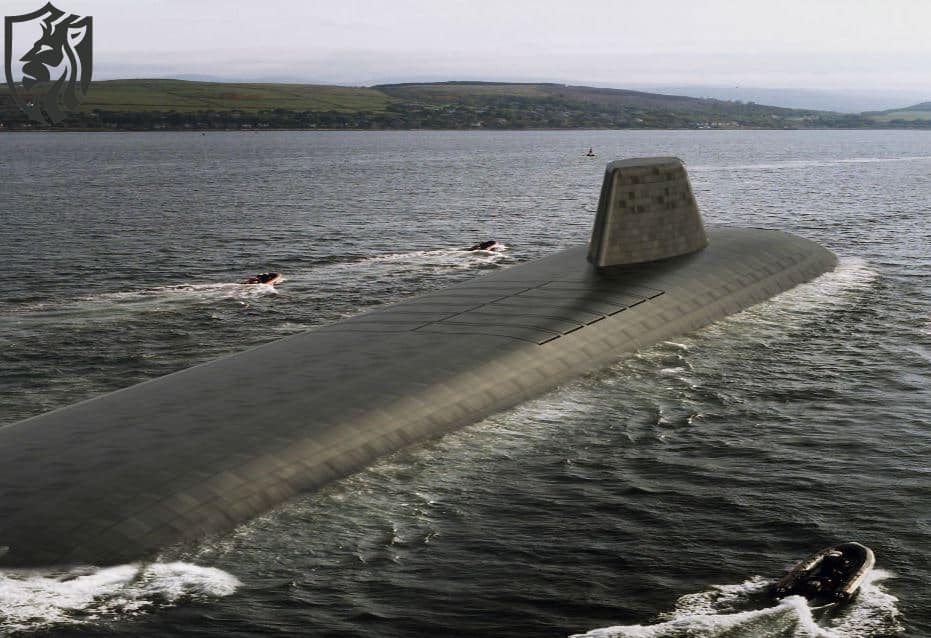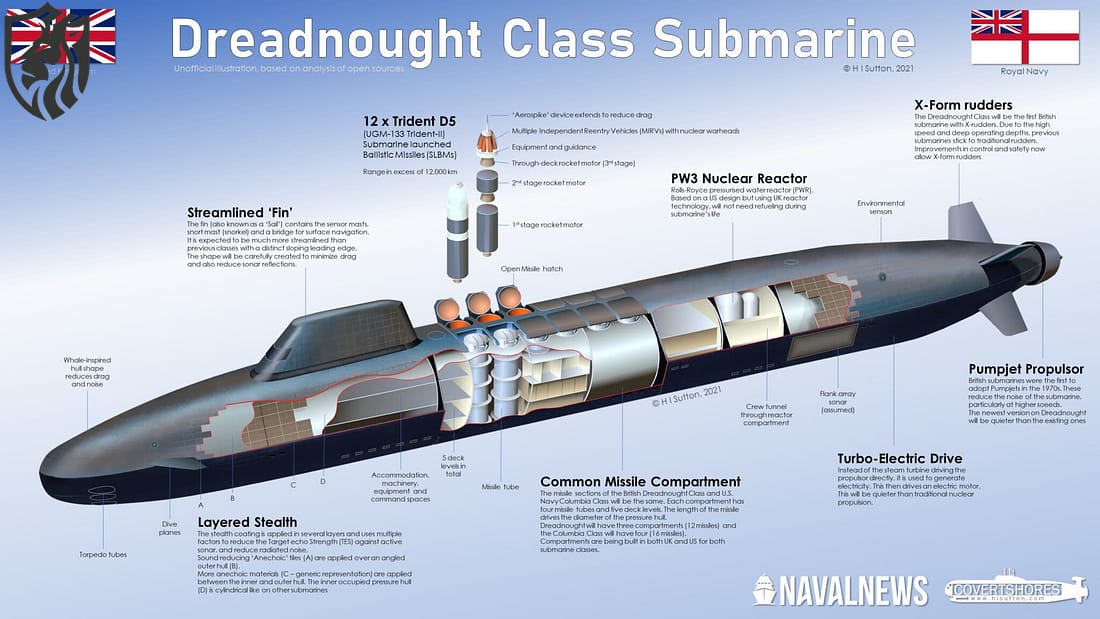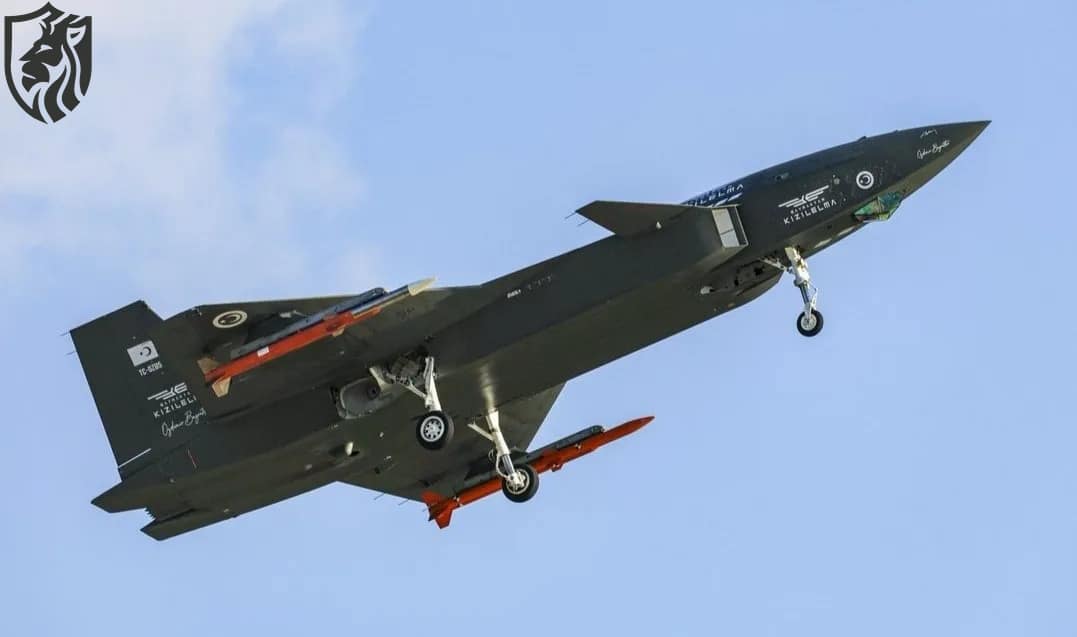
The Royal Navy’s forthcoming Dreadnought-class submarines represent a significant advance in the UK’s maritime defense capabilities. These vessels are set to replace the ageing Vanguard class, ensuring the continuation of Britain’s at-sea nuclear deterrent. Recent insights into Dreadnought’s design reveal notable modifications aimed at enhancing stealth, manoeuvrability, and operational efficiency.
Revised Bow Design Enhancements
A scale model showcased at the UK House of Commons during Rolls-Royce’s “Nuclear Week in Parliament” has provided a clearer picture of the Dreadnought’s design.One of the most significant changes is the relocation of the bow’s horizontal stabilisers.
Unlike traditional designs where these stabilisers are mounted on the hull, the Dreadnought features bow planes situated on the sail.We anticipate this adjustment to enhance depth stability, particularly in low-speed operations and ballistic missile launches.

Advanced Hull and Propulsion Features
The Dreadnought boasts a streamlined hull with an elliptical bow, designed to optimise laminar water flow and reduce acoustic signatures—crucial for remaining undetected during extended missions. The adoption of a pumpjet propulsion system further minimises noise and enhances the submarine’s stealth capabilities. Additionally, implementing an X-shaped stern configuration offers superior manoeuvrability and depth control compared to traditional designs.
Armament and Strategic Capabilities
Equipped with twelve vertical launch tubes, the Dreadnought is capable of housing Trident II D5 ballistic missiles, a cornerstone of the UK’s nuclear deterrence strategy.The submarine also features four 533 mm torpedo tubes designed for Spearfish torpedoes, ensuring robust defense against both surface and underwater threats.
Crew Accommodations and Operational Longevity
Designed for extended missions, the Dreadnought provides enhanced living conditions for its crew. Amenities include upgraded medical facilities, dedicated accommodations for female personnel, training rooms, and modern fitness areas.
A new lighting system simulates day-night cycles, aiding crew adjustment during prolonged underwater deployments. Powered by the advanced PWR3 nuclear reactor, the submarine can remain submerged for extended periods without the need for refuelling, ensuring a service life exceeding 35 years.

Historical Significance and Future Outlook
The name “Dreadnought” carries deep history, recalling the British battleship of 1906 that changed naval warfare forever. Today’s Dreadnought-class submarines continue that legacy, bringing advanced technologies and modern designs to meet current defence needs. With anti-submarine warfare improving, the Dreadnought class promises stronger survivability and higher mission success. These submarines will secure the UK’s maritime defence and strategic edge for decades.









